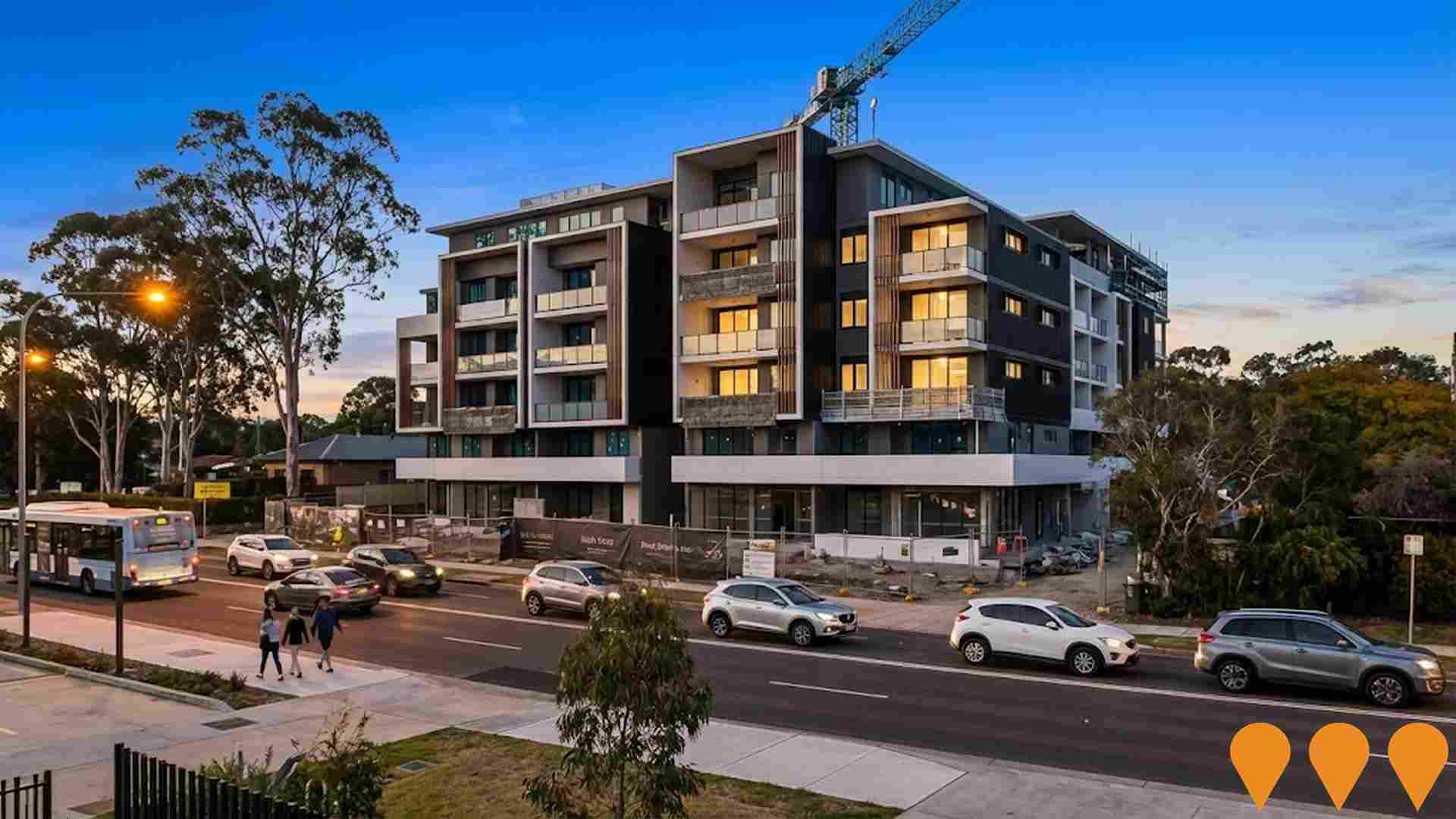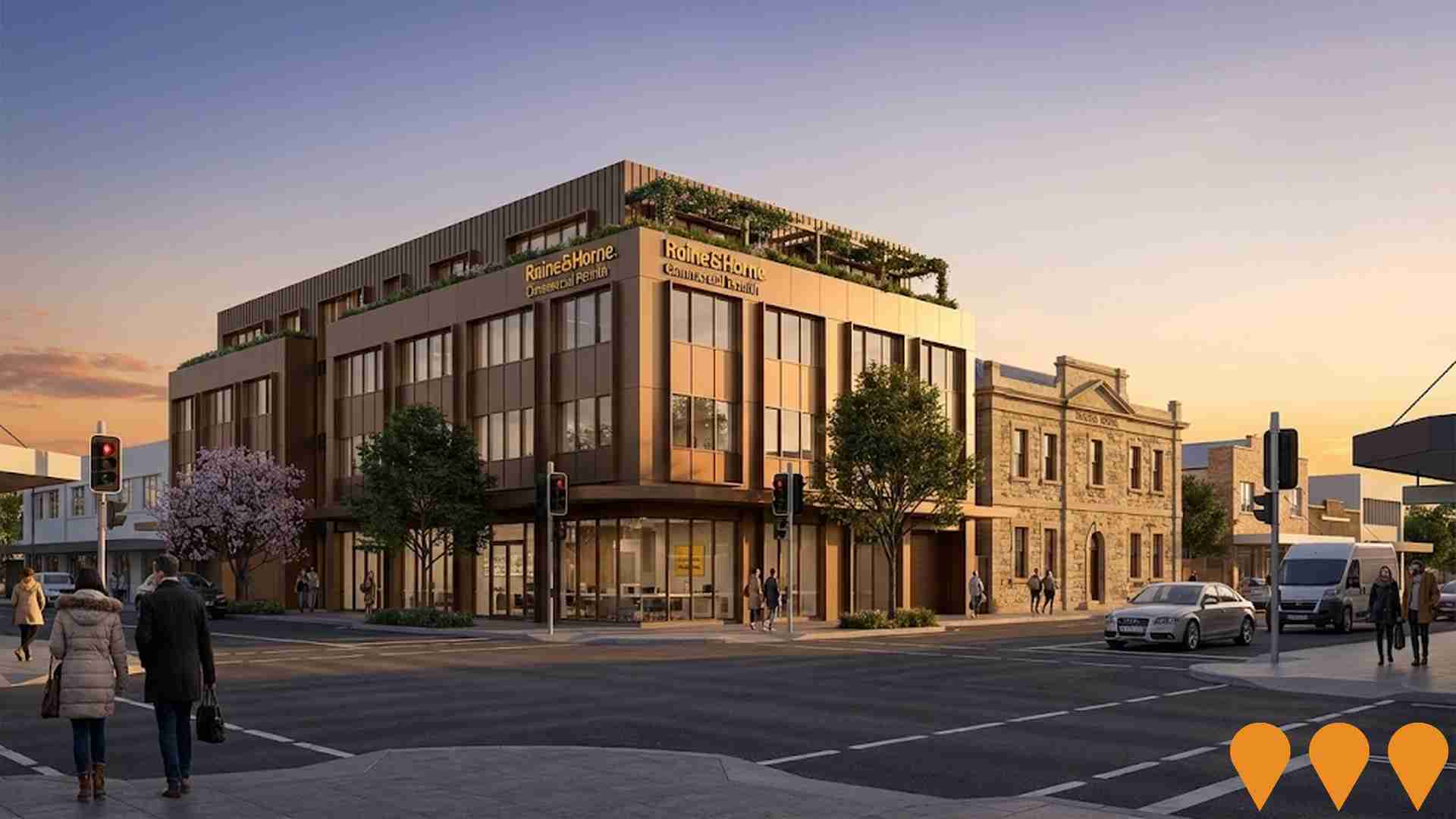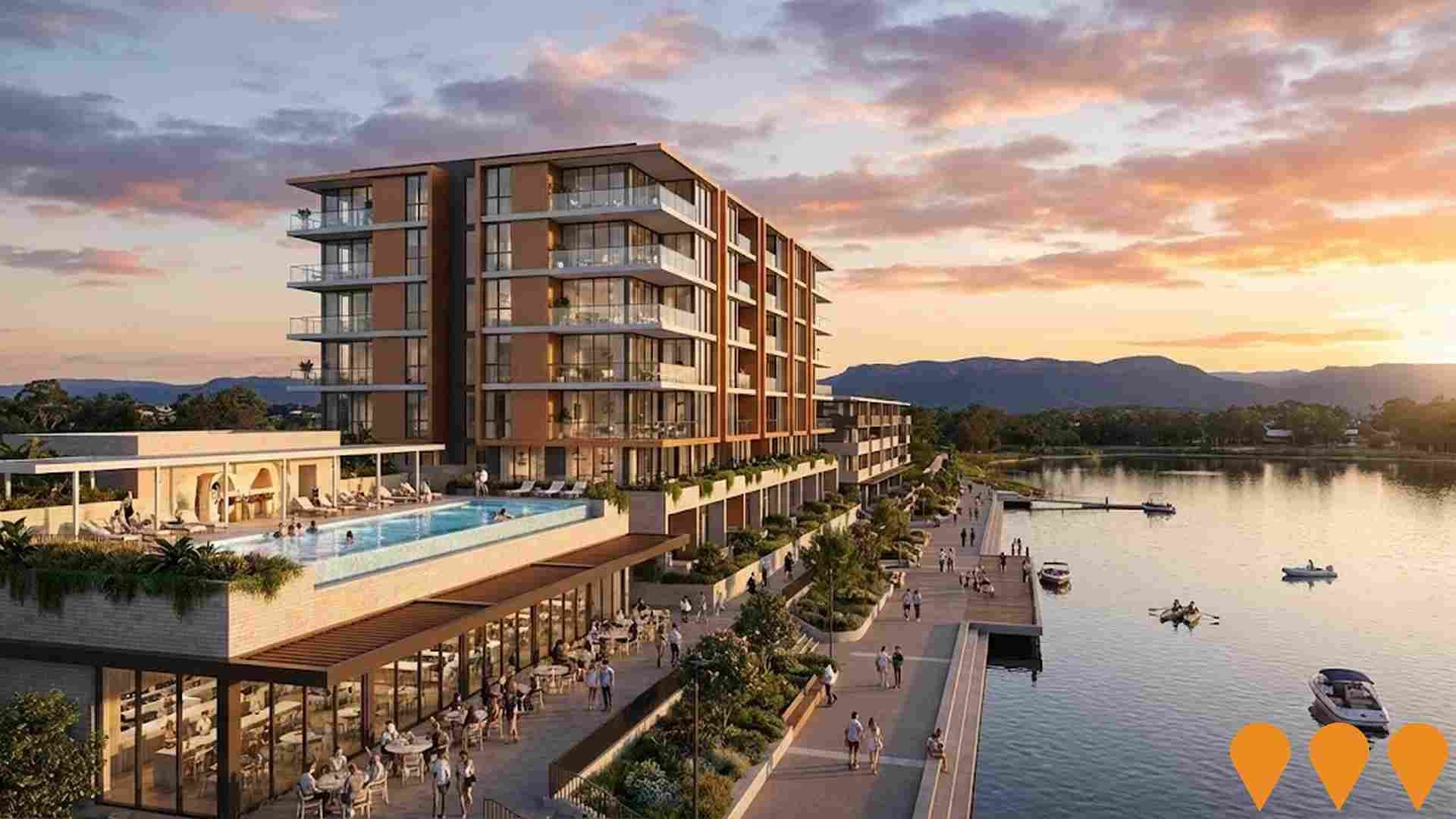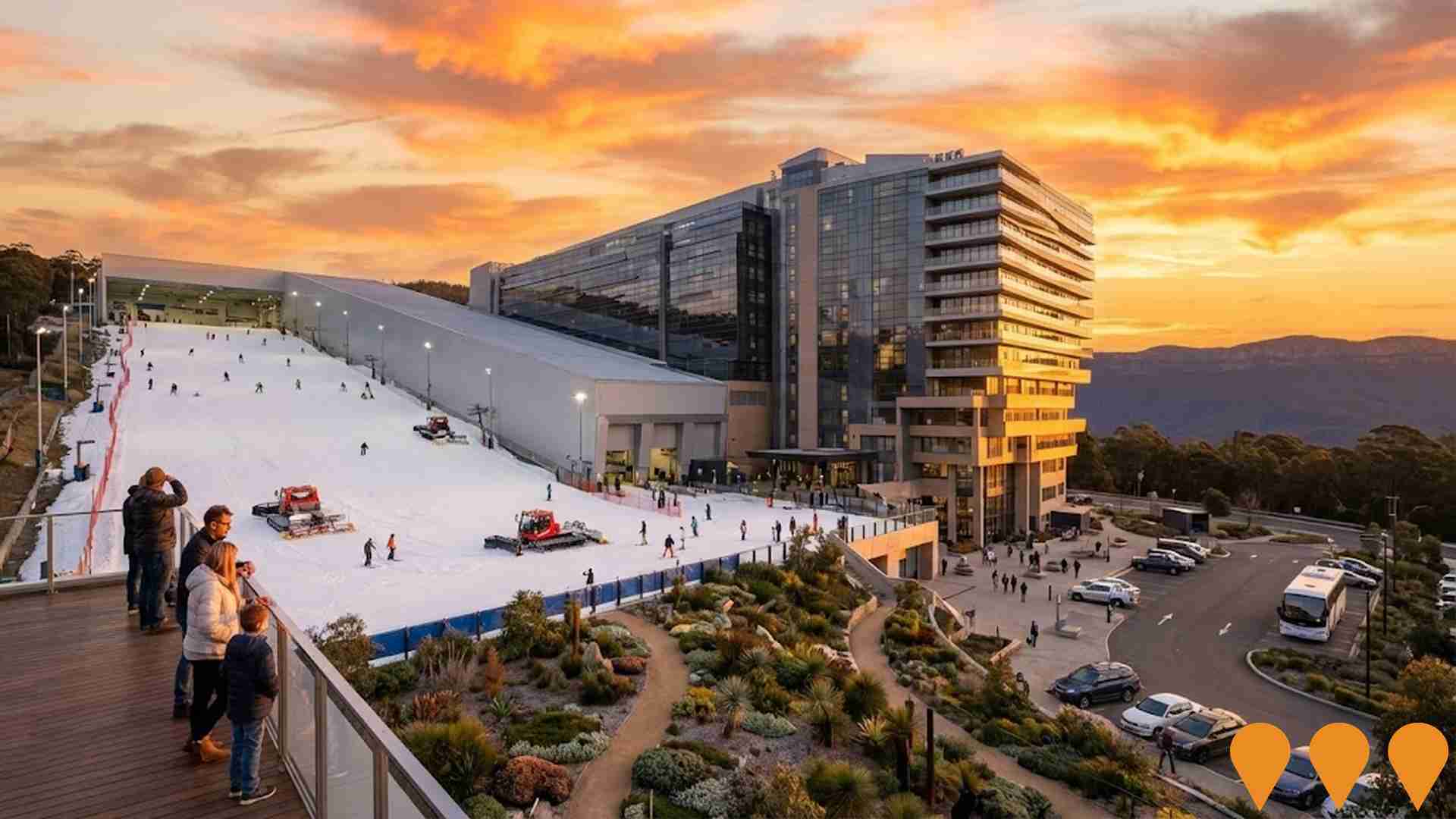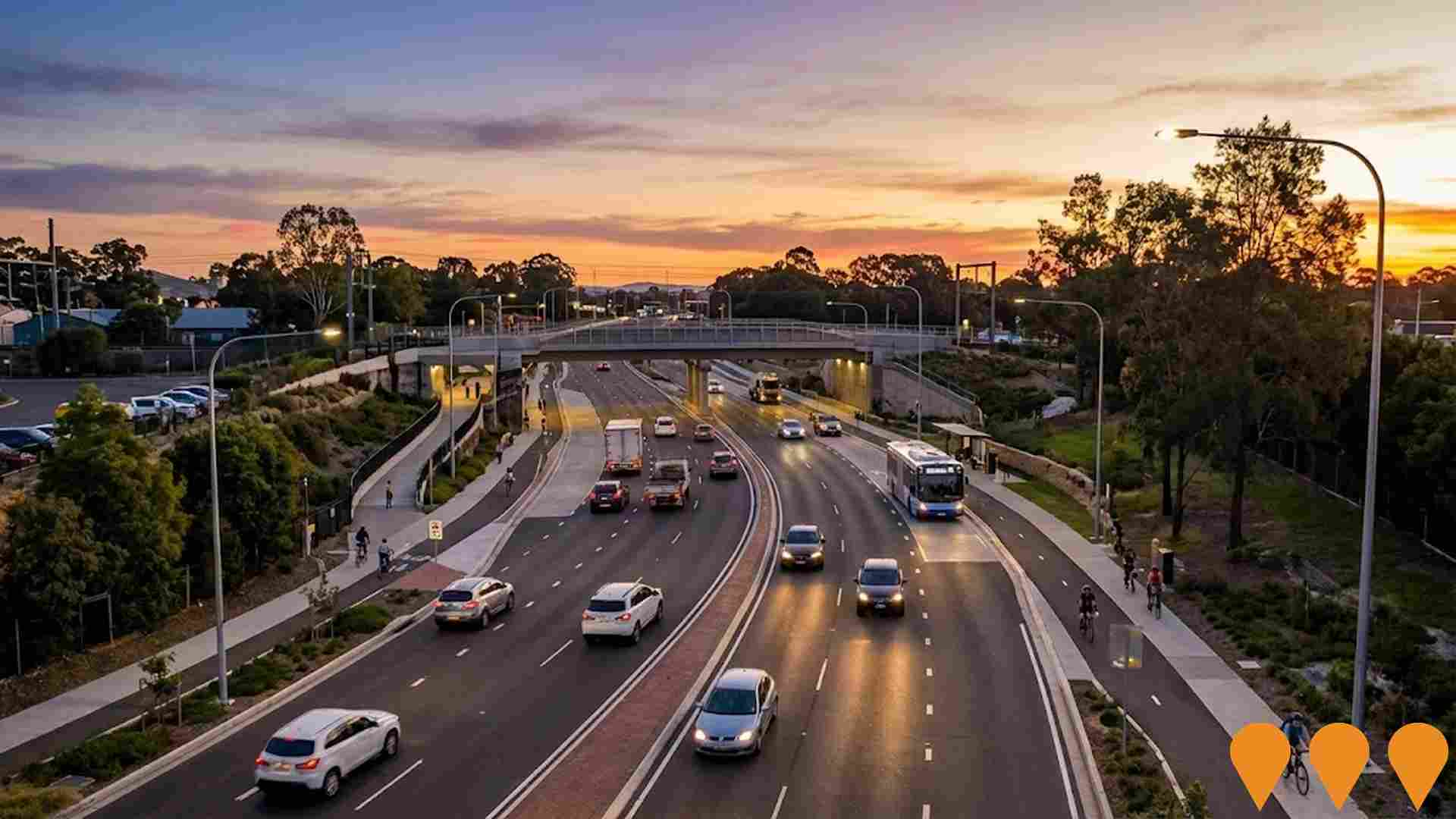Chart Color Schemes
est. as @ -- *
ABS ERP | -- people | --
2021 Census | -- people
Sales Activity
Curious about local property values? Filter the chart to assess the volume and appreciation (including resales) trends and regional comparisons, or scroll to the map below view this information at an individual property level.
Find a Recent Sale
Sales Detail
Population
Jamisontown - South Penrith is positioned among the lower quartile of areas assessed nationally for population growth based on AreaSearch's assessment of recent, and medium term trends
As of Nov 2025, Jamisontown - South Penrith's population is approximately 17,755. This figure shows an increase of 429 people since the 2021 Census, which recorded a population of 17,326. The population stood at 17,589 in June 2024, with an additional 96 validated new addresses since the Census date contributing to this growth. This results in a population density ratio of 1,968 persons per square kilometer, higher than the national average according to AreaSearch assessments. Overseas migration accounted for approximately 51.2% of overall population gains during recent periods.
AreaSearch uses ABS/Geoscience Australia projections for each SA2 area released in 2024 with a base year of 2022. For areas not covered by this data, AreaSearch utilises NSW State Government's SA2 level projections released in 2022 with a base year of 2021. Growth rates by age group from these aggregations are applied to all areas for the years 2032 to 2041. Based on projected demographic shifts, national areas are expected to have lower quartile growth. By 2041, Jamisontown - South Penrith is projected to increase by 717 persons based on the latest population numbers, representing a total gain of 3.1% over the 17-year period.
Frequently Asked Questions - Population
Development
Residential development activity is lower than average in Jamisontown - South Penrith according to AreaSearch's national comparison of local real estate markets
Jamisontown - South Penrith has granted approximately 45 residential property approvals annually. Over the past five financial years, from FY21 to FY25, a total of 228 homes have been approved, with an additional 14 approved in FY26 so far. The average new resident arrival per new home over these years is around 0.2 per year, indicating that supply meets or exceeds demand and offers greater buyer choice while supporting potential population growth above projections.
The average expected construction cost of new dwellings is $240,000, below the regional average, suggesting more affordable housing options for buyers. This financial year has seen $13.6 million in commercial development approvals, indicating balanced commercial development activity. Compared to Greater Sydney, Jamisontown - South Penrith shows significantly reduced construction levels, at 57.0% below the regional average per person, which typically reinforces demand and pricing for existing properties. This level is also below the national average, reflecting the area's maturity and possible planning constraints. New development consists of 79.0% standalone homes and 21.0% attached dwellings, maintaining the area's traditional suburban character with a focus on family homes appealing to those seeking space.
The location has approximately 390 people per dwelling approval, indicating an established area. Future projections suggest Jamisontown - South Penrith will add 551 residents by 2041. At current development rates, new housing supply should comfortably meet demand, providing good conditions for buyers and potentially supporting growth beyond current population projections.
Frequently Asked Questions - Development
Infrastructure
Jamisontown - South Penrith has strong levels of nearby infrastructure activity, ranking in the top 30% nationally
The performance of an area can significantly be influenced by changes to its local infrastructure, major projects, and planning initiatives. AreaSearch has identified a total of 21 such projects that are expected to impact the area. Notable among these are the Mulgoa Road Upgrade from Glenmore Parkway to Jeanette Street, the Penrith Stadium Redevelopment, Winter Sports World, and Nepean Hospital Redevelopment. The following list provides details on those projects likely to be most relevant.
Professional plan users can use the search below to filter and access additional projects.
INFRASTRUCTURE SEARCH
 Denotes AI-based impression for illustrative purposes only, not to be taken as definitive under any circumstances. Please follow links and conduct other investigations from the project's source for actual imagery. Developers and project owners wishing us to use original imagery please Contact Us and we will do so.
Denotes AI-based impression for illustrative purposes only, not to be taken as definitive under any circumstances. Please follow links and conduct other investigations from the project's source for actual imagery. Developers and project owners wishing us to use original imagery please Contact Us and we will do so.
Frequently Asked Questions - Infrastructure
Nepean Hospital Redevelopment
More than $1 billion multi-stage redevelopment of Nepean Hospital in Western Sydney. Stage 1 (completed 2022) delivered a new 14-storey clinical services tower with expanded emergency department, ICU, operating theatres, medical imaging, inpatient wards and more. Stage 2 (under construction, main building completion late 2026) includes a new connected 7-storey clinical building with expanded ICU, in-centre renal dialysis, nuclear medicine, cardiology, additional inpatient beds (including paediatrics), dedicated palliative care unit, new main entry and reception, Aboriginal Mudyin Family Centre, enhanced community health facilities, and a separate Child and Adolescent Mental Health Unit (opening late 2025). Delivered by Health Infrastructure NSW in partnership with Nepean Blue Mountains Local Health District.
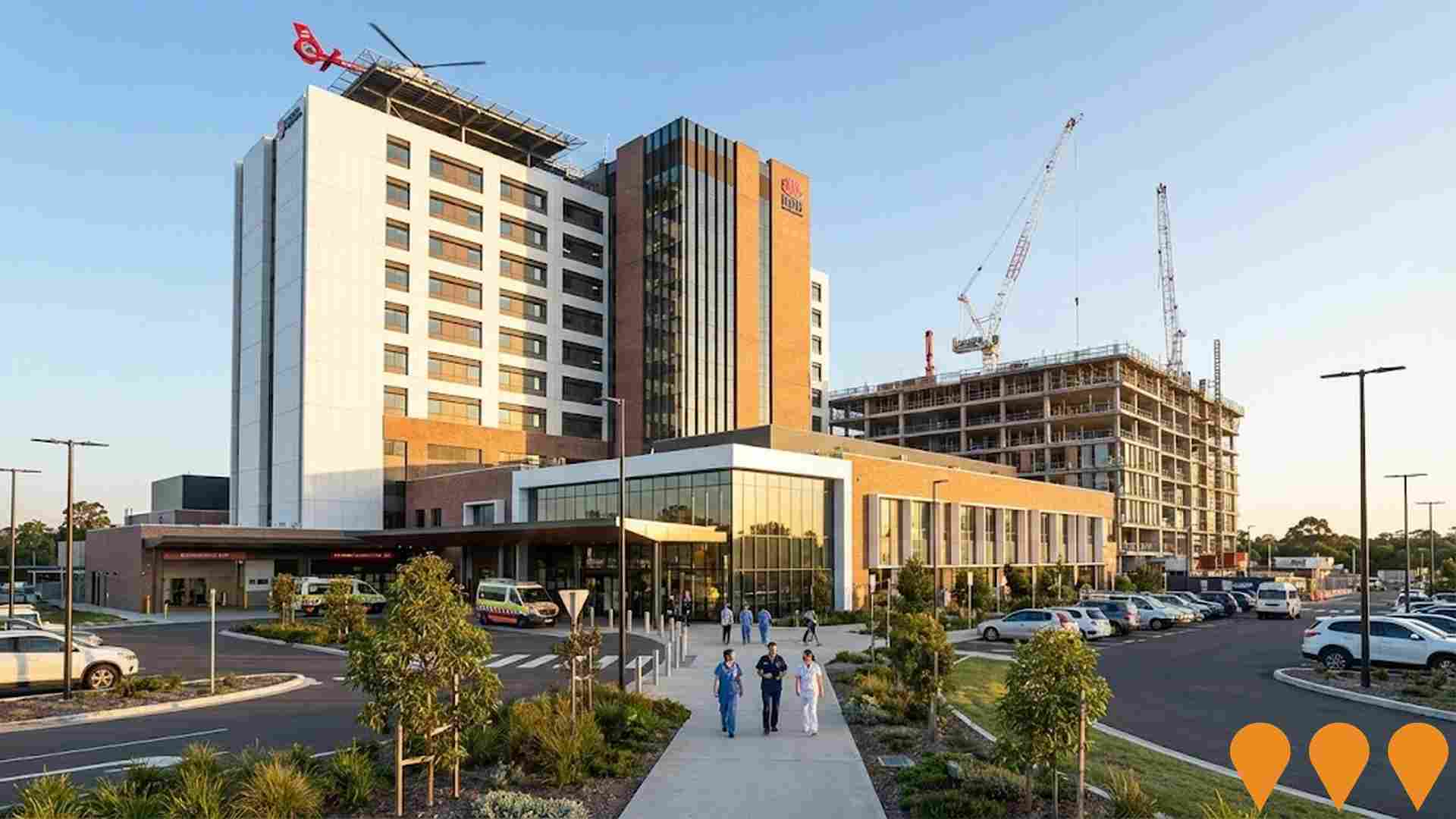
Sydney Metro Western Sydney Airport - Orchard Hills Station
Construction of a new metro station at Orchard Hills as part of the $11 billion Sydney Metro Western Sydney Airport line. The station, located on the eastern side of Kent Road, will service a future mixed-use precinct and house the line's stabling and maintenance facility. The project is being delivered by the Parklife Metro consortium and will connect St Marys to the new Western Sydney Airport and Aerotropolis.

Penrith Stadium Redevelopment
A $309 million NSW Government redevelopment transforming Penrith Stadium into a modern 25,000-seat (up to 30,000 for concerts) multipurpose venue designed by architects Populous and Tyrrell Studio. Features new eastern and western grandstands with premium seating, significantly improved accessibility (including 300% more wheelchair spaces), gender-inclusive amenities, enhanced player facilities, corporate areas, and incorporation of Dharug cultural elements through a Design with Country approach. The surrounding precinct includes remodeled community training fields with multipurpose courts and improved landscaping. John Holland is the principal contractor. Early works completed 2025; grandstands demolished August 2025; main construction ongoing for completion ahead of the 2027 NRL season.
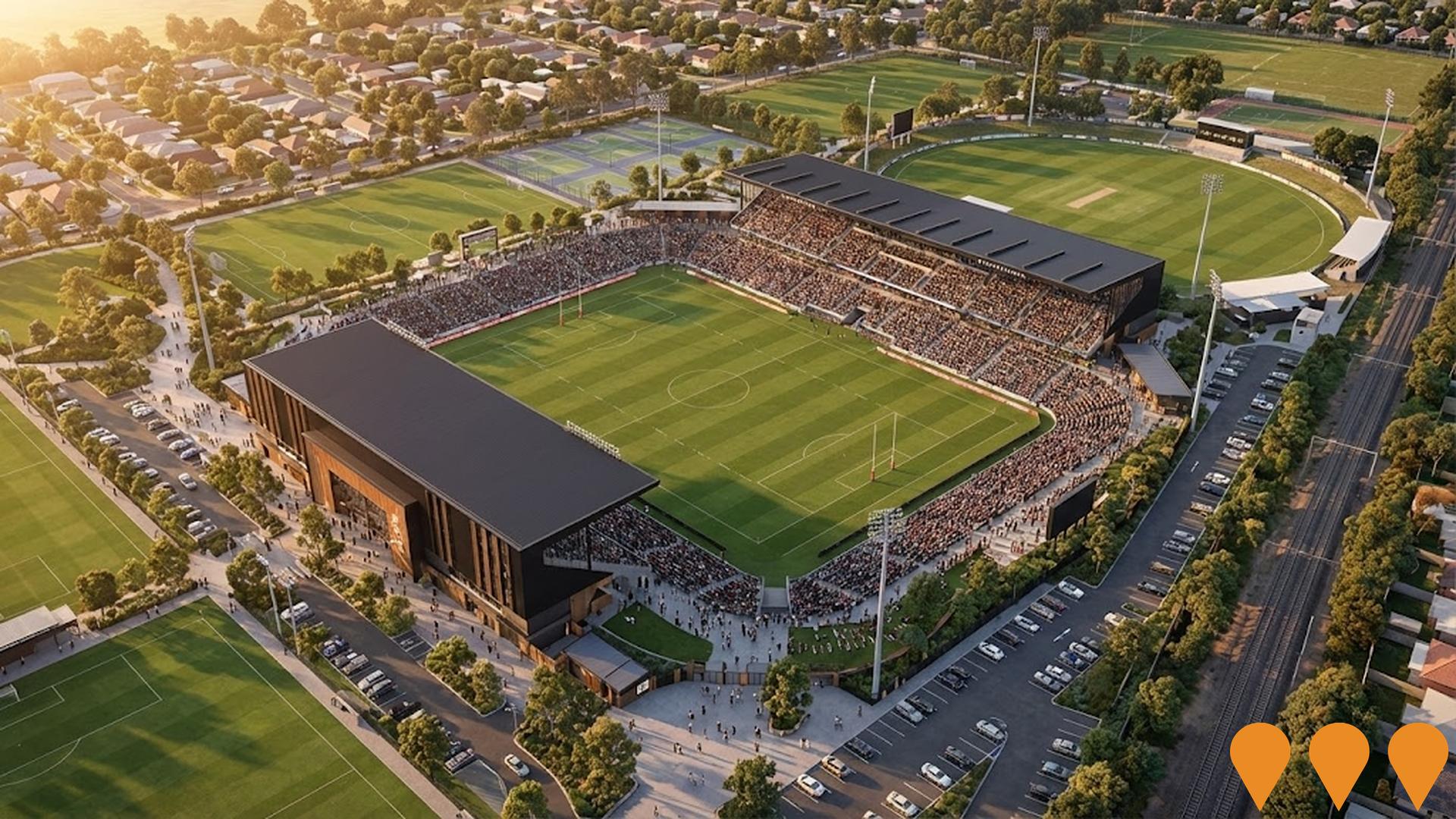
Mayfair Penrith
A landmark mixed-use development by Urban Property Group featuring two towers (originally approved at 10 storeys for 287 apartments, with amended application for 14 storeys and 431 apartments pending approval). Designed by award-winning SJB Architects, the development includes ground-level retail spaces (3,500sqm), commercial offices (4,500sqm), and a distinctive double-height colonnade inspired by Sydney's GPO building. Features rooftop pools with Blue Mountains views and communal facilities. The project includes 15 percent affordable housing. Located directly opposite Penrith Station, representing a transit-oriented development in the North Penrith precinct. Construction commenced in 2024.
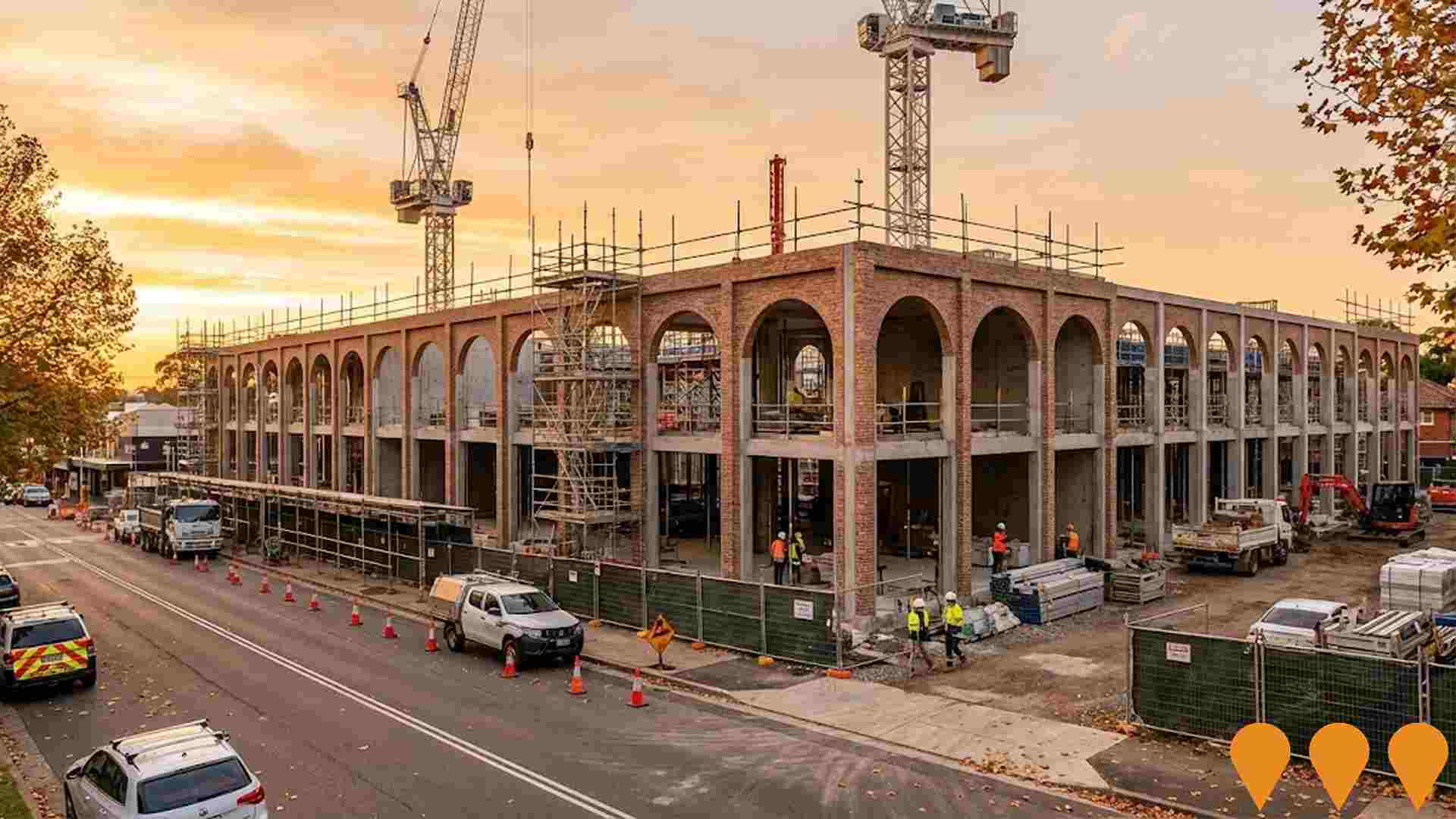
Mulgoa Road Upgrade - Glenmore Parkway to Jeanette Street
The NSW Government is planning to widen and upgrade Mulgoa Road between Glenmore Parkway to Jeanette Street to support current and future traffic demands and expected growth in the area. The 850m upgrade will improve road safety and travel times, and reduce congestion by adding a lane in each direction. The project includes replacement of the roundabout at Glenmore Parkway with traffic lights, three lanes approaching the intersection, upgraded intersection at Spencer Street/Schoolhouse Road, and shared paths on both sides of the upgraded road.

Mulgoa Road Upgrade - Jeanette Street to Blaikie Road
Major road widening and upgrade project to support current and future traffic demands and expected growth in the area. Includes new infrastructure, improved intersections, and enhanced traffic flow. Upgrade of Mulgoa Road in Western Sydney to address high congestion and safety risks, catering to growing population and employment in Penrith.

Caddens Corner Stage 2
Mixed-use precinct development featuring 477 residential apartments across 19 buildings, including one, two and three-bedroom options, approximately 10,000 sqm of new commercial and retail space, and over 14,000 sqm of communal public space. The development will create a new civic heart at Caddens, extending the existing Caddens Corner Shopping Centre. Located within walking distance of Western Sydney University's Werrington and Kingswood campuses, and TAFE NSW Kingswood campus, with access to public transport including Sydney Metro, passenger rail and bus services. Community consultations were completed in June 2025, with a State Significant Development Application planned for submission to NSW Government in late 2025.

East Side Quarter (ESQ)
A $600 million masterplanned precinct comprising 850 apartments across 11 buildings, delivered in 5 stages. The development features a lakeside dining precinct, a wellness club 'The Sanctuary', and resort-style amenities. Stage 1 (One East Side) and Stage 2 (Aqua) are complete. Stage 3 (Eden) topped out in May 2025, and construction for Stage 4 (Perle) commenced in mid-2025.
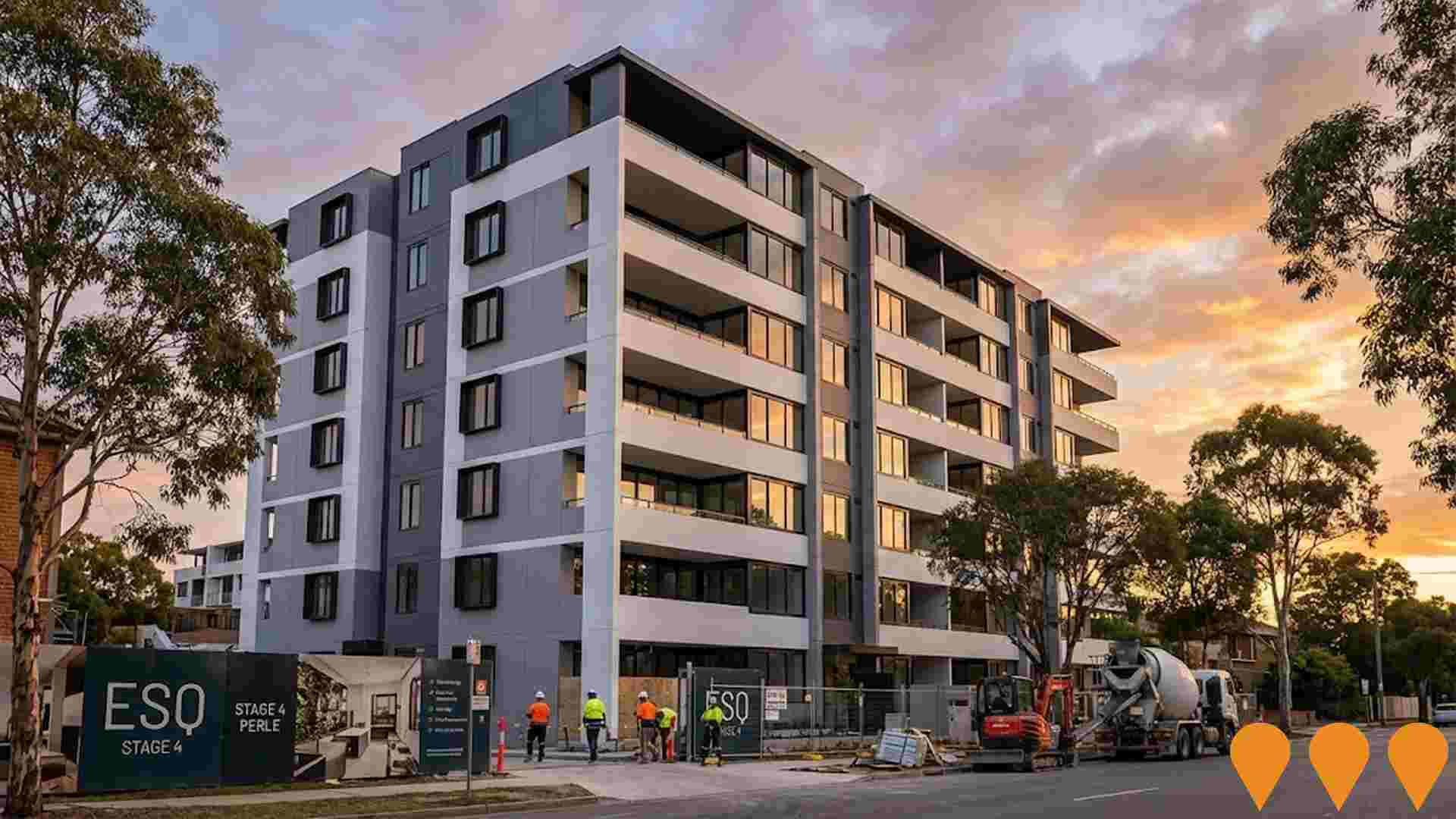
Employment
Despite maintaining a low unemployment rate of 3.2%, Jamisontown - South Penrith has experienced recent job losses, resulting in a below average employment performance ranking when compared nationally
Jamisontown - South Penrith has a skilled workforce with essential services sectors well represented. As of June 2025, the unemployment rate is 3.2%.
In this month, 9,584 residents are employed while the unemployment rate is 1.0% lower than Greater Sydney's rate of 4.2%. Workforce participation is similar to Greater Sydney's 60.0%. Leading employment industries among residents include construction, health care & social assistance, and retail trade. The area specializes in construction with an employment share 1.6 times the regional level.
Professional & technical services have limited presence at 4.4% compared to the regional 11.5%. Labour force levels decreased by 2.3% over the year ending June 2025, alongside a 2.2% employment decline, resulting in a 0.1 percentage point fall in unemployment rate. Jobs and Skills Australia's national employment forecasts from May 2025 estimate that national employment will expand by 6.6% over five years and 13.7% over ten years. Applying these projections to Jamisontown - South Penrith's employment mix suggests local growth of approximately 6.3%% over five years and 13.0% over ten years.
Frequently Asked Questions - Employment
Income
The economic profile demonstrates above-average performance, with income metrics exceeding national benchmarks based on AreaSearch comparative assessment
Jamisontown - South Penrith had a median taxpayer income of $55,559 and an average of $64,625 in the financial year 2022, according to postcode level ATO data aggregated by AreaSearch. This is roughly national average, differing from Greater Sydney's median income of $56,994 and average income of $80,856. By September 2025, estimated incomes are approximately $62,565 (median) and $72,774 (average), considering a 12.61% Wage Price Index growth since financial year 2022. In Jamisontown - South Penrith, household, family, and personal incomes cluster around the 54th percentile nationally, as per 2021 Census figures. The $1,500-$2,999 income bracket dominates with 36.1% of residents (6,409 people), similar to regional levels at 30.9%. Housing affordability pressures are severe, with only 82.5% of income remaining, ranking at the 49th percentile. The area's SEIFA income ranking places it in the 4th decile.
Frequently Asked Questions - Income
Housing
Jamisontown - South Penrith is characterized by a predominantly suburban housing profile, with above-average rates of outright home ownership
Dwelling structure in Jamisontown - South Penrith, as per the latest Census, consisted of 82.7% houses and 17.3% other dwellings (semi-detached, apartments, 'other' dwellings). This compares to Sydney metro's 77.4% houses and 22.6% other dwellings. Home ownership in Jamisontown - South Penrith stood at 31.0%, with mortgaged dwellings at 35.7% and rented ones at 33.2%. The median monthly mortgage repayment was $2,113, below Sydney metro's average of $2,167. Median weekly rent in the area was $400, matching Sydney metro's figure but exceeding the national average of $375. Nationally, Jamisontown - South Penrith's mortgage repayments were significantly higher than the Australian average of $1,863.
Frequently Asked Questions - Housing
Household Composition
Jamisontown - South Penrith has a typical household mix, with a lower-than-average median household size
Family households constitute 72.4% of all households, including 31.1% couples with children, 24.8% couples without children, and 15.5% single parent families. Non-family households comprise the remaining 27.6%, with lone person households at 25.0% and group households at 2.6%. The median household size is 2.6 people, which is smaller than the Greater Sydney average of 2.8.
Frequently Asked Questions - Households
Local Schools & Education
Educational outcomes in Jamisontown - South Penrith fall within the lower quartile nationally, indicating opportunities for improvement in qualification attainment
The area's university qualification rate of 16.6% is significantly lower than Greater Sydney's average of 38.0%. Bachelor degrees are the most common at 11.4%, followed by postgraduate qualifications (3.7%) and graduate diplomas (1.5%). Vocational credentials are prevalent, with 39.8% of residents aged 15+ holding them, including advanced diplomas (10.5%) and certificates (29.3%). Educational participation is high at 28.8%, comprising primary education (10.9%), secondary education (7.9%), and tertiary education (3.7%).
Jamisontown - South Penrith's five schools have a combined enrollment of 2,516 students, serving distinct age groups with balanced educational opportunities, typical of Australian school conditions (ICSEA: 985).
Frequently Asked Questions - Education
Schools Detail
Nearby Services & Amenities
Transport
Transport servicing is moderate compared to other areas nationally based on assessment of service frequency, route connectivity and accessibility
Jamisontown - South Penrith has 104 active public transport stops. These are bus stops serviced by 44 routes. Together, they facilitate 1700 weekly passenger trips.
The area's transport accessibility is excellent; residents typically live 159 meters from the nearest stop. On average, there are 242 daily trips across all routes, equating to about 16 weekly trips per stop.
Frequently Asked Questions - Transport
Transport Stops Detail
Health
Health performance in Jamisontown - South Penrith is lower than average with common health conditions somewhat prevalent across both younger and older age cohorts
Jamisontown-South Penrith faces significant health challenges.
Common health conditions are somewhat prevalent across both younger and older age cohorts. The rate of private health cover is approximately 52%, higher than the average SA2 area (~9,214 people). Mental health issues impact 8.8% of residents, while arthritis impacts 8.4%. 67.2% of residents declare themselves completely clear of medical ailments, compared to 69.5% across Greater Sydney. As of 2016, 17.9% of residents are aged 65 and over (3,172 people), higher than the 14.1% in Greater Sydney. Health outcomes among seniors present some challenges, broadly in line with the general population's health profile.
Frequently Asked Questions - Health
Cultural Diversity
In terms of cultural diversity, Jamisontown - South Penrith records figures broadly comparable to the national average, as found in AreaSearch's assessment of a number of language and cultural background related metrics
Jamisontown-South Penrith has a cultural diversity profile roughly in line with the wider region's average. As of the 2016 Census, 81.0% of its population were born in Australia, 89.5% were citizens, and 87.9% spoke English only at home. Christianity was the main religion, comprising 57.9% of people, similar to Greater Sydney's 57.9%.
The top three ancestry groups were Australian (29.0%), English (27.2%), and Irish (7.9%). Notably, Maltese, Samoan, and Lebanese ethnicities had higher representations than the regional averages: Maltese at 1.5% vs 2.9%, Samoan at 0.5% vs 0.6%, and Lebanese at 0.7% vs 0.8%.
Frequently Asked Questions - Diversity
Age
Jamisontown - South Penrith's population is slightly younger than the national pattern
The median age in Jamisontown - South Penrith is 37 years, matching Greater Sydney's figure and closely resembling Australia's median age of 38 years. The age group of 75-84 years has a strong representation at 6.7%, compared to Greater Sydney's percentage. However, the 35-44 age cohort is less prevalent in Jamisontown - South Penrith at 14.0%. Between 2021 and the present, the 75-84 age group has increased from 5.2% to 6.7% of the population. Conversely, the 5-14 age cohort has decreased from 13.5% to 12.2%, and the 65-74 age group has dropped from 10.5% to 9.4%. By 2041, demographic projections indicate significant shifts in Jamisontown - South Penrith's age structure. The 85+ age group is expected to grow by 125%, reaching 724 people from the current 321. This growth will be led by those aged 65 and above, comprising 74% of projected population growth. Meanwhile, the 15-24 and 0-4 age cohorts are anticipated to experience population declines.

